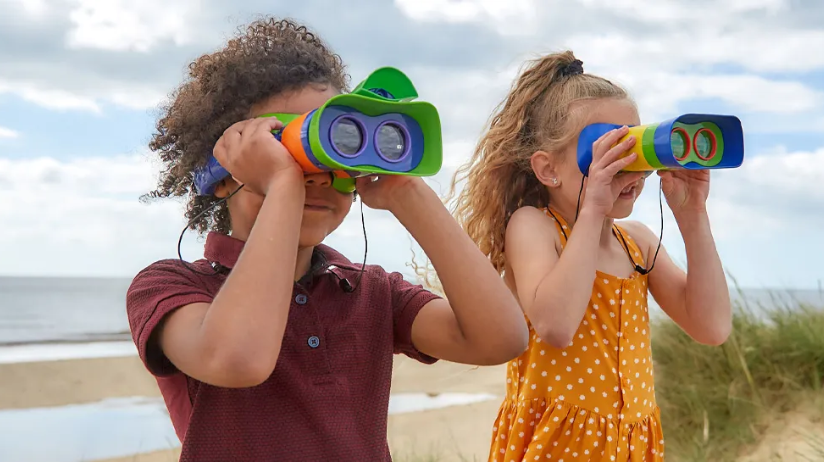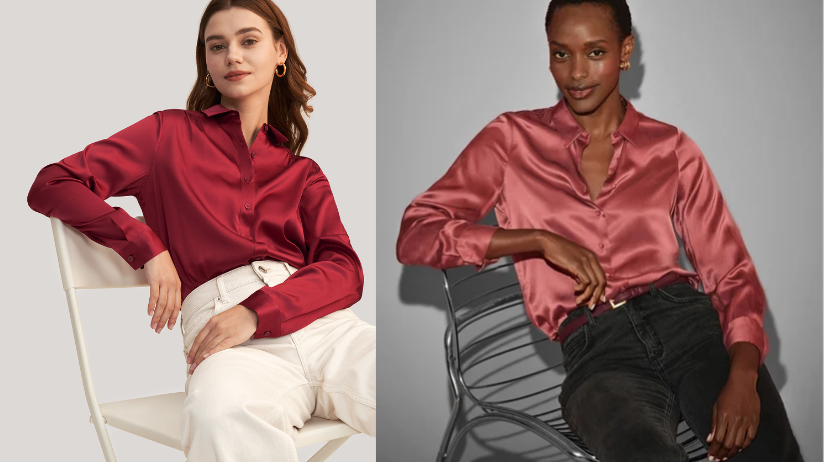The Hidden Educational Value of Outdoor Toys
By Admin
Published on 2025-10-30 12:33:00

From climbing sets to water tables, outdoor toys have an underrated role in learning. This post explores how they strengthen both the body and mind while fostering social growth.
When parents think about outdoor toys, the first thought is usually energy release. Slides, swings, balls, and bikes seem like ways to get kids moving and wear them out before bedtime. But outdoor play is about more than exercise. These toys are also tools for building problem-solving skills, teamwork, resilience, and even academic readiness.
From an outdoor playset that encourages climbing and coordination to a simple water table that teaches physics, the educational side of play in the open air is often underestimated. The truth is, every moment spent outside is a chance for growth in body, mind, and social development.
Why Outdoor Play Matters in Childhood
Unstructured time outdoors has been linked to stronger physical health, better emotional balance, and improved cognitive function. Kids outdoor toys amplify these benefits by giving children challenges to solve, environments to navigate, and opportunities to work together.
Building Confidence and Independence
When a child masters the monkey bars or figures out how to climb a rope ladder, they gain more than muscle strength. They learn persistence, problem-solving, and self-trust. These lessons transfer into classroom learning and personal growth.
Social Development in Action
On a kids playground or with a children's outdoor playset, children practice cooperation, sharing, and leadership. Negotiating turn-taking, inventing group games, and solving small disagreements are all part of the experience.
Active Learning Through Movement
Physical play supports brain development. Balancing, jumping, or swinging stimulates the vestibular system, which influences coordination, attention span, and even reading readiness.
Educational Outdoor Toys That Teach Without a Lesson Plan
Not all toys marketed as educational live up to the name. The best educational outdoor toys work because they encourage curiosity and problem-solving naturally.
Climbing Structures and Playsets
An outdoor playset with slides, climbing walls, or bridges helps children test balance, strength, and spatial awareness. It also encourages imaginative play, transforming into castles, spaceships, or forts in their minds.
Water and Sand Tables
These sensory toys introduce physics, engineering, and cause-and-effect learning. Kids experiment with flow, volume, and texture while developing fine motor skills.
Ride-On Toys and Bikes
Balance bikes, scooters, and pedal cars are not just fun. They teach coordination, navigation, and confidence in risk-taking.
Garden Kits for Kids
Miniature tools, seed starters, and planters show children how things grow. They learn responsibility by caring for plants and patience while waiting for results.
The Role of Early Learning Outdoor Toys
Play in early childhood sets the foundation for academic and social success. Early learning outdoor toys take big concepts and make them tangible.
- A balance beam teaches focus and coordination, which later support concentration in class.
- A set of outdoor building blocks teaches geometry, problem-solving, and cooperation.
- A parachute game builds teamwork and listening skills.
These activities make abstract lessons concrete, giving kids an edge when they transition to structured classroom learning.
Linking Outdoor Toys to STEM Skills
STEM education (science, technology, engineering, math) doesn’t have to wait for school. Educational outdoor toys often teach these subjects in ways that stick.
- Water wheels show mechanical energy in action.
- Pulley systems on playsets introduce basic engineering.
- Sandcastle building teaches structural design.
- Measuring how far a ball rolls introduces math concepts like distance and speed.
Kids absorb these lessons naturally because they are hands-on, not abstract.
Outdoor Toys and Emotional Growth
Play outside is also about building resilience. A child climbing a ladder for the first time experiences both fear and excitement. When they succeed, they gain confidence. When they fail and try again, they learn perseverance.
This emotional growth is just as important as academic learning. The combination of risk, challenge, and reward builds a mindset that sees failure as part of success.
Creating the Perfect Outdoor Play Environment
Parents often wonder how to set up their space to maximize learning and fun. It doesn’t always require a full children's outdoor playset. Even a small yard or shared space can become a hub for growth.
Variety Is Key
Offer a mix of climbing toys, sensory activities, and imaginative play items. For example, a slide, a sandbox, and some chalk can cover physical, creative, and problem-solving skills.
Rotate Toys Regularly
Switching out kids outdoor toys keeps children interested and prevents play from becoming repetitive.
Safe Risk-Taking
Choose toys that challenge without overwhelming. A climbing wall with handholds, for instance, encourages problem-solving but remains manageable with supervision.
Outdoor Toys for Different Age Groups
Age-appropriate choices ensure safety while maximizing learning benefits.
Toddlers
Simple early learning outdoor toys like water tables, push cars, and soft climbing blocks build gross motor skills and sensory awareness.
Preschoolers
Play kitchens for the yard, small slides, and sand pits encourage pretend play, social skills, and creativity.
Early Elementary
More complex outdoor playsets with swings, climbing walls, and rope ladders introduce strength, coordination, and cooperative play.
Older Kids
Sports equipment, larger bikes, and outdoor science kits keep older children engaged while building advanced teamwork and problem-solving abilities.
Everyday Items as Outdoor Toys
Parents don’t always need to buy specialized products. Some of the most engaging outdoor toys are everyday items repurposed creatively. Cardboard boxes become spaceships, buckets turn into drums, and sticks become swords or fishing rods.
This approach also encourages resourcefulness and imagination, proving that outdoor learning does not have to be expensive.
Why Outdoor Toys Are Worth the Investment
A well-designed children's outdoor playset or collection of durable toys is more than a way to pass the time. These items build physical strength, mental resilience, academic readiness, and social confidence. They outlast trends, offering children skills they can use throughout life.
Parents who invest in educational outdoor toys often notice that their children spend more time outside, play more cooperatively, and develop stronger problem-solving abilities. The long-term value goes far beyond the initial price.
Playing outside is not just a way to burn off energy, it is an essential part of learning. Outdoor toys give children the tools to explore movement, teamwork, creativity, and problem-solving in ways that screens and indoor toys cannot. These toys create opportunities for resilience, independence, and social growth. For parents looking to raise confident, capable children, the backyard can be just as important as the classroom.
Follow VibenVenture for more on toys and recreation.
You dress for comfort, or confidence, or maybe chaos. But your clothes are already telling your story before you even say a word.
Before a word leaves your mouth, your outfit has already spoken. That oversized sweater you keep reaching for? It might be whispering comfort. That tailored blazer you break out on big days? It’s announcing confidence, capability, and control. Our outfit choices often say what we haven’t found the words for yet. It’s the emotional truths and triggers behind clothing that turn a closet into something more than storage, it's a gallery of your inner world.
Style doesn't just consist of trends alone. It’s an constantly changing language we speak to the world around us. And often, without knowing it, we’re broadcasting our moods, boundaries, histories, and even our aspirations. The way we dress is an invitation to connect or a subtle signal to keep a respectful distance.
If you look closely, you’ll notice patterns in your clothing habits. There are days when you throw on something bold to feel seen. There are also days when you fold into your softest hoodie because you need to feel safe. The connection between clothes and emotions is incredibly real. And the more tuned in you are, the more you can learn about yourself without saying a word.
Emotional Dressing Is Real
Let’s drop the idea that getting dressed is just a routine task. Because the truth is, emotional dressing happens daily. That rush of calm when you put on your go-to jeans? That little lift you feel when your favorite clothes still fit after a rough week? And no it’s not just the texture or the fabric, but actually you feel seen and oddly soothed.
Science has actually backed this up. Studies show that clothing colors and emotions are deeply intertwined. People often gravitate toward darker tones like navy, charcoal, or deep green when feeling low, and opt for bright shades like red or yellow during periods of energy and confidence. Color has a way of expressing what we’re not ready to verbalize, making it a powerful tool in our emotional toolkit.
And then there's the act of getting dressed itself. On days when the world feels heavy, pulling yourself together with intention, even if it’s just a soft tee and your best-fitting trousers can feel like reclaiming a bit of control. Our outfit choices may be rooted in aesthetic, but they often reveal much more about our internal weather.
Your "Go-To" Outfit Isn’t Random
Everyone has one. The outfit that feels like a reset button. Maybe it’s a flowy dress that catches the light just right, or maybe it’s a black-on-black combo that makes you feel quietly powerful. But here’s the thing: that favorite outfit didn’t earn its place by accident. It did so because it offers emotional safety. Maybe it reminds you of a time you felt admired. Maybe it simply doesn’t ask too much of you.
These are the garments that act like emotional armor. They allow you to move through your day without questioning if you look okay. They offer familiarity in moments of instability. And the emotional connection we form with them goes far beyond style. They’re rooted in memory, identity, and yes, even vulnerability.
Fashion has its moods, but your emotional clothing truths run deeper. Sometimes, the simplest top carries the heaviest meaning. And that’s what makes your wardrobe personal consist of emotional alignment not just trends.
When Style and Personality Finally Sync
Ever met someone whose outfit just makes sense with who they are? Their clothing seems to mirror their presence. Nothing feels forced, nothing screams for attention and yet, you notice them. That’s style meeting personality at a soul level.
When your style choices stop trying to impress and start reflecting your essence, everything clicks. The textures, the silhouettes, even the little rips or rolled-up sleeves, they all feel intentional.
There’s also freedom in not needing to explain your fashion anymore. The moment you start dressing for yourself, your style becomes easier to trust. You stop second-guessing outfit choices. You stop shopping for approval. Instead, you start owning your narrative without needing to speak a word. That’s what your clothes say about you when they’re finally aligned with who you are.
Rebuilding a Wardrobe That Feels Like You
If you’ve ever looked into a closet full of clothes and thought, "I have nothing to wear," it’s rarely about quantity. More often, it’s about disconnection. Those pieces might fit your body, but not your current self. And that's your signal: it’s time to rebuild.
But rebuilding doesn’t mean starting over. It means listening in. What colors have been resonating with you lately? What shapes make you feel most at home in your skin? These are the subtle emotional clues that guide wardrobe changes that actually stick.
Start by identifying the pieces you keep reaching for. What do they have in common? Is it comfort? Is it confidence? Let those favorite clothes guide the blueprint for what comes next. This kind of intentional shopping leads to a closet filled with things that speak to your now, not your past or your Pinterest board.
Letting go of clothes that feel performative is one of the most freeing things you can do. Maybe they were trendy, maybe they got you compliments, but if they never felt like you, they were just costumes. Dressing with authenticity means choosing what mirrors your insides, even when it doesn’t match the outside noise.
The goal isn’t to follow style rules but to follow emotional alignment. The connection between clothes and emotions becomes clearer when your closet feels more like a reflection than a projection. And when that happens, dressing becomes less about decision fatigue and more about emotional fluency.
Fashion isn’t shallow. It’s layered with meaning. Every outfit tells a story, every clothing choice carries weight. From emotional triggers to quiet truths, our clothes often speak louder than we do. When you tune in to what your favorite clothes are saying, you’re not just decoding a wardrobe, you’re learning to hear yourself more clearly. So next time you reach for that hoodie or blazer or flowy skirt, pause. Ask yourself what story it’s telling today. Because chances are, it’s already speaking volumes.
For more on clothing and fashion, follow VibenVenture.




